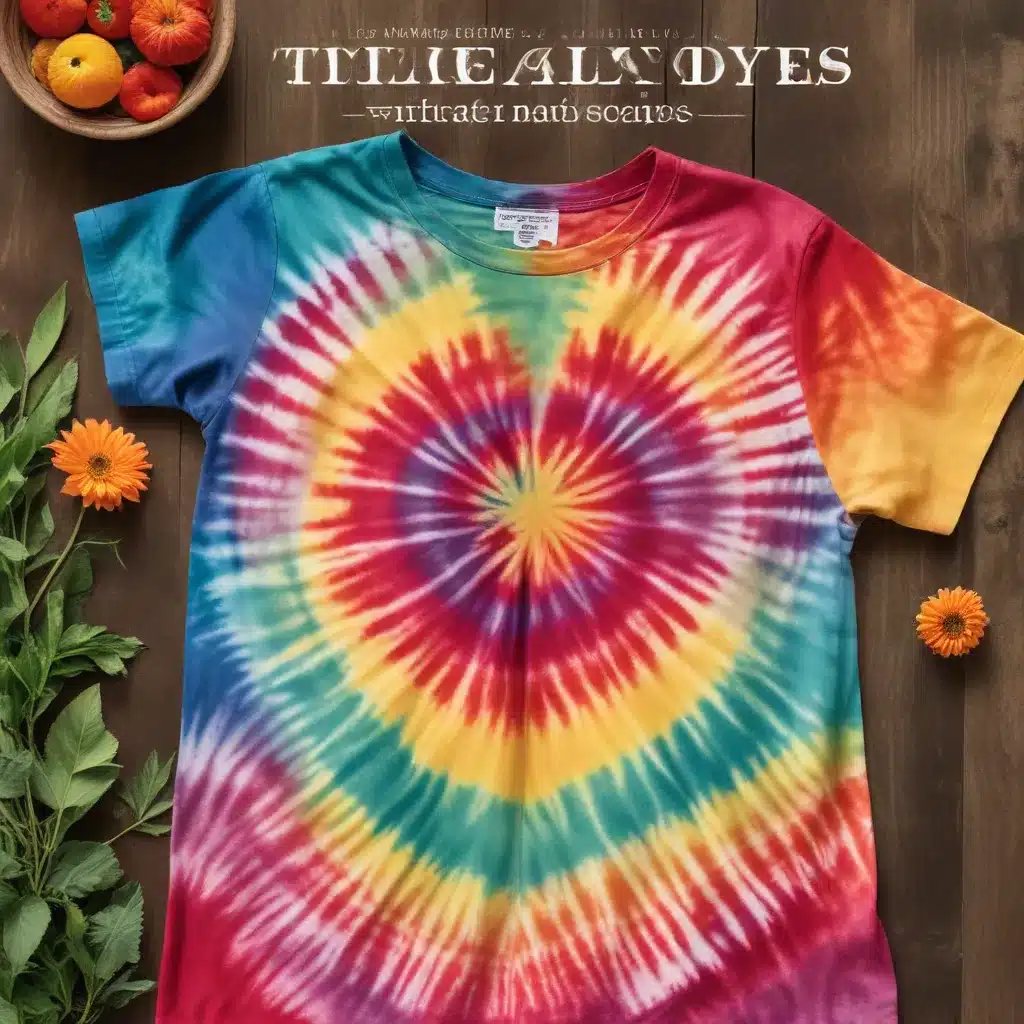
At Crooked Pines Farm, we believe that connecting with nature can cultivate creativity and foster a lifelong appreciation for the great outdoors. One of our favorite ways to bring the beauty of the farm into our daily lives is through the art of natural dyeing. Join us as we explore the vibrant world of tie-dye, using homegrown and foraged materials to create stunning, eco-friendly textiles.
Natural Dye Techniques
Tie-dye is a centuries-old technique that has experienced a resurgence in popularity in recent years. Unlike commercial dyes, which can be harsh on the environment, natural dyes are derived from plants, minerals, and even fungi, offering a sustainable and fascinating way to add color to fabrics.
By harnessing the power of botanical pigments, we can produce a wide array of hues, from the rich indigo blues of woad to the sunny yellows of turmeric. The process is not only visually striking but also deeply satisfying, as you watch the colors blossom before your eyes.
Tie-Dye Patterns
One of the joys of natural dyeing is the element of surprise. Each fold, pleat, and knot in the fabric can result in unexpected patterns, transforming a plain white tee into a work of art. Shibori, a traditional Japanese technique, involves intricate folding and binding to create intricate designs, while spiral and striped patterns can be achieved through simple rubber-band applications.
Eco-Friendly Fabric Dyeing
Beyond the aesthetic appeal, natural dyes offer a more sustainable alternative to their synthetic counterparts. Commercial dyes can be harsh on the environment, polluting waterways and contributing to textile waste. In contrast, our farm-fresh dyes are biodegradable and gentle on the planet, allowing you to create beautiful textiles with a clear conscience.
Dyeing with Plant-Based Pigments
From the vibrant beets that lend their fuchsia hues to the deep indigo of woad, the plants that surround us on the farm are a treasure trove of natural color. Marigolds, turmeric, and even avocado pits can be transformed into dye baths, each offering a unique palette to explore.
Farming and Crafting
At Crooked Pines Farm, we believe in the power of hands-on learning, and natural dyeing is the perfect blend of farm-fresh inspiration and creative expression. By cultivating our own dye-producing plants, we can not only enjoy the vibrant hues but also teach our visitors about the importance of sustainable textile production.
Homegrown Dye Sources
Our fields and gardens are alive with plants that can be transformed into stunning dyes. Calendula, madder, and woad are just a few of the flowering and leafy crops we grow specifically for their color-producing properties. By incorporating these plants into our crop rotation and companion planting strategies, we ensure a steady supply of natural dye materials.
Sustainable Textile Production
Beyond the dye itself, we prioritize the use of natural, biodegradable fibers for our tie-dye projects. Organic cotton, linen, and hemp are just a few of the eco-friendly textiles we source, allowing us to create beautiful, long-lasting pieces with minimal environmental impact.
Crafting with Natural Materials
Tie-dye is just the beginning of our natural dye adventures. We also explore techniques like bundle dyeing, which uses the heat of the sun to transfer pigments from leaves and flowers onto fabric, and eco-printing, which leaves delicate botanical imprints on paper and textiles.
Color Exploration
The true magic of natural dyeing lies in the unexpected color palettes that emerge. From the vibrant jewel tones of beets and pomegranates to the earthy neutrals of avocado pits and black walnuts, each batch of dye offers a unique canvas for exploration.
Vibrant Hue Combinations
Pairing complementary colors, such as the vibrant orange of marigolds with the deep purple of red cabbage, can result in stunning tie-dye designs. By experimenting with different dye concentrations and application techniques, we can create a rainbow of hues that are distinctly our own.
Earthy Tone Palettes
For a more subtle, rustic aesthetic, we turn to the muted tones of foraged materials like oak bark, maple leaves, and onion skins. These natural dyes can produce soft, weathered shades that lend an air of timelessness to our textiles.
Dyeing Techniques for Color Depth
The depth of color in our natural dyes can be enhanced through various techniques, such as overdyeing, discharge dyeing, and color-blending. By layering dyes or removing existing pigments, we can achieve a stunning array of multicolored and ombre effects.
Project Ideas
The possibilities for natural dye crafts are endless, from vibrant tote bags and scarves to cozy throw pillows and wall hangings. We invite you to explore the magical world of tie-dye and discover the beauty that can bloom from the plants in your own backyard.
Apparel and Accessories
Transform a plain white tee or a simple canvas tote into a one-of-a-kind accessory with our natural dye techniques. Experiment with bold patterns and color combinations to create truly unique pieces that reflect your personal style.
Home Decor Textiles
Bring the beauty of the farm indoors by incorporating natural-dyed textiles into your home decor. Craft throw pillows, curtains, or table linens using our vibrant plant-based pigments for a touch of earthy elegance.
Gift-Worthy Craft Projects
Natural dye projects make wonderful, thoughtful gifts for friends and family. From hand-dyed scarves to patterned tea towels, these handmade creations are sure to be cherished for their beauty and the care that goes into each one.
At Crooked Pines Farm, we believe that connecting with nature through creative pursuits can be truly transformative. Whether you’re a seasoned crafter or just starting to explore the world of natural dyes, we invite you to join us in this journey of color, sustainability, and self-expression. Grab your apron, pick a few blooms from the garden, and let’s get dyeing!


